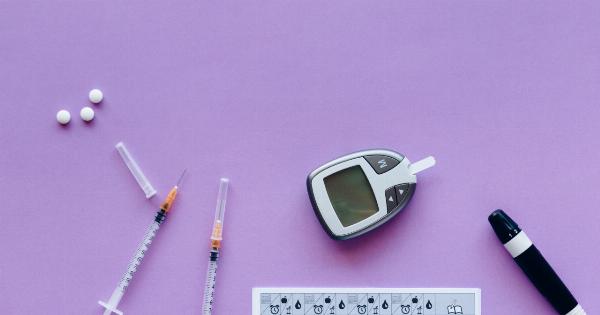Diabetes is a chronic condition that affects millions of people worldwide. It is caused by the body’s inability to produce or properly use insulin, which regulates blood sugar levels.
Diabetes can lead to serious health problems such as heart disease, blindness, kidney failure, and nerve damage. While there are treatments available for diabetes, researchers are always looking for new and innovative solutions. One area of exploration is the use of precious metals like gold, silver, and platinum.
What Are Precious Metals?
Precious metals are rare and valuable metals that are often used in jewelry, coins, and other decorative items. The most common precious metals are gold, silver, and platinum. These metals have a variety of industrial and technological uses as well.
How Could Precious Metals Help Treat Diabetes?
Researchers are exploring several ways that precious metals could be used to treat diabetes.
Gold Nanoparticles for Insulin Delivery
One area of exploration involves using gold nanoparticles as a delivery system for insulin. Insulin is typically injected into the body, but this can be painful and inconvenient for patients.
Researchers are working on ways to use gold nanoparticles to encapsulate insulin and deliver it orally or through the skin. The gold nanoparticles can protect the insulin from being broken down by the body’s enzymes and deliver it directly to the cells that need it.
Silver and Diabetes Wound Care
Diabetes can lead to foot wounds that are difficult to heal. Silver has long been known for its antimicrobial properties, and researchers are exploring ways to use silver-based wound dressings to help diabetic patients heal faster.
Silver can help prevent infection and promote healing, and some studies have shown that silver-based dressings are more effective than traditional dressings.
Platinum-Based Diabetes Drugs
Researchers are also exploring the use of platinum in diabetes drugs. Platinum-based drugs are already used to treat cancer, and researchers believe they could be effective in treating diabetes as well.
Platinum-based drugs can help regulate blood sugar levels and improve insulin sensitivity.
Benefits and Challenges of Using Precious Metals for Diabetes Treatment
There are several potential benefits to using precious metals for diabetes treatment. These metals are non-toxic and biocompatible, making them safe for use in the human body.
They are also stable and can withstand harsh conditions, making them ideal for drug delivery and wound care applications. Additionally, these metals are abundant and cost-effective.
However, there are also some challenges to using precious metals for diabetes treatment. One challenge is developing methods for precise and effective delivery of the metals to the affected tissues.
Another challenge is ensuring that the metals do not accumulate in the body over time and cause toxicity. More research is needed to address these challenges.
Conclusion
The use of precious metals like gold, silver, and platinum for diabetes treatment is an exciting area of exploration.
Researchers are discovering new and innovative ways to use these metals to improve insulin delivery, wound care, and blood sugar regulation. While there are some challenges to overcome, the potential benefits of using these metals make them an intriguing option for diabetes treatment.































